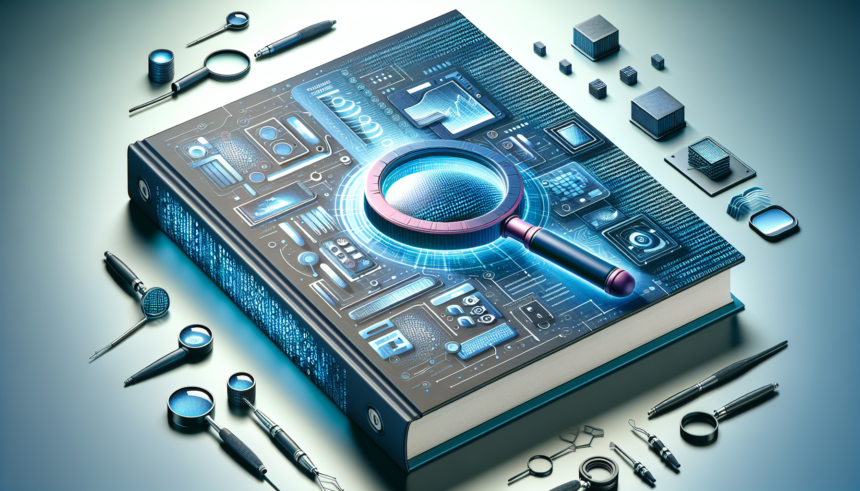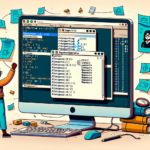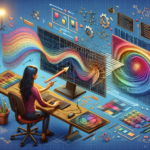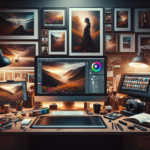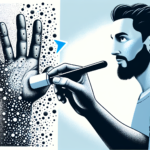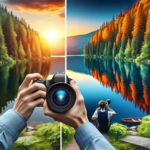<!DOCTYPE html>
<html lang="en">
<head>
<meta charset="UTF-8">
<meta name="viewport" content="width=device-width, initial-scale=1.0">
<title>An In-depth Exploration of Image Cloning Techniques</title>
</head>
<body>
<article>
<section>
<p>Image cloning is a fascinating and versatile field within digital image processing, where specific sections of an image can be seamlessly replicated and integrated into another part of the same or a different image. This technique is commonly utilized in photo editing, computer graphics, and various multimedia applications. There are two primary methods of image cloning: patch-based cloning and gradient-based cloning.</p>
</section>
<section>
<h2>Patch-based Cloning</h2>
<p>Patch-based cloning, also known as texture synthesis, involves selecting a source region from an image and copying this region to a target area. This method is particularly effective in scenarios where the copied region needs to blend naturally with its surroundings. Advanced algorithms focus on coherence to maintain the perceptual quality of the cloned image.</p>
<h3>Seam Carving</h3>
<p>One notable algorithm within the patch-based cloning domain is seam carving. Seam carving dynamically resizes images by incrementally adding or removing pixels in a way that preserves the image's visual content. By prioritizing the least noticeable areas, this approach ensures that the cloned sections appear smooth and unnoticeable.</p>
<h3>Pyramid Blending</h3>
<p>In contrast, pyramid blending uses multi-resolution analysis. This involves decomposing images into a pyramid of increasingly smaller images, blending corresponding levels, and reconstructing the final image from the blended pyramid. This method is highly effective in eliminating edge artifacts and creating a seamless transition between the cloned and existing regions.</p>
</section>
<section>
<h2>Gradient-based Cloning</h2>
<p>Gradient-based cloning focuses on transferring the gradient field rather than pixel values. This method ensures the cloned area not only matches in color but also in underlying structure, making it highly suitable for complex backgrounds with intricate details.</p>
<h3>Poisson Image Editing</h3>
<p>Poisson image editing is a sophisticated technique that uses partial differential equations (PDEs) to interpolate pixel values. This method ensures the cloned section adheres to the gradient of the surrounding area, making the result appear more natural. Applications of this technique can be found in digital inpainting, object removal, and texture transfer.</p>
<h3>Color Propagation</h3>
<p>Another noteworthy method is color propagation, which involves guiding color information into areas with missing or altered data. Algorithms like Laplacian smoothing play a significant role in this process by ensuring the smooth transition and propagation of color, maintaining visual coherency throughout the image.</p>
</section>
<section>
<h2>Applications of Image Cloning</h2>
<p>Image cloning techniques are used across a wide array of applications, from professional photo retouching and restoration to more complex fields like augmented reality (AR) and virtual reality (VR).</p>
<h3>Photo Retouching</h3>
<p>One of the most common uses of image cloning is in photo retouching. Cloning tools in software like Adobe Photoshop allow users to remove imperfections, replicate textures, or even transplant objects from one photo to another.</p>
<h3>Digital Art and Design</h3>
<p>Digital artists leverage cloning techniques to create complex compositions, ensuring elements blend naturally. This includes matte painting, visual effects, and other creative endeavors where realism and consistency are paramount.</p>
<h3>Medical Imaging</h3>
<p>In medical imaging, image cloning assists in reconstructing missing or corrupted sections of medical scans, enabling more accurate diagnostics and research.</p>
<h3>AR and VR</h3>
<p>In the context of augmented reality (AR) and virtual reality (VR), cloning techniques facilitate the integration of virtual elements into real-world environments, increasing the immersive experience by ensuring seamless blending of virtual and real objects.</p>
</section>
<section>
<h2>Challenges and Future Directions</h2>
<p>Despite its advancements, image cloning still faces significant challenges, especially in maintaining realism and coherence under various conditions. Artifacts, mismatched textures, and unnatural blending are common issues that need addressing.</p>
<h3>Artificial Intelligence and Machine Learning</h3>
<p>Recent developments in artificial intelligence (AI) and machine learning offer promising solutions. AI-driven models can learn complex features and patterns from large datasets, improving the quality and accuracy of cloned images. Techniques like Generative Adversarial Networks (GANs) are already showing potential in generating highly realistic cloned images.</p>
<h3>Interactive Tools</h3>
<p>Interactive cloning tools are also on the rise, providing real-time feedback and adjustment options to users. These tools enhance user control and precision, enabling more efficient and effective image manipulation.</p>
</section>
<section>
<h2>Conclusion</h2>
<p>Image cloning is a vital component of modern digital imaging, with a broad spectrum of applications across various fields. From basic photo editing to advanced medical imaging, the potential of cloning techniques is immense. As technology progresses, leveraging AI and machine learning will likely push the boundaries of what's possible, making seamless and realistic cloning more accessible and effective. Continuous research and development are essential in overcoming existing challenges and unlocking new possibilities in this ever-evolving domain.</p>
</section>
</article>
<section>
<h2>Frequently Asked Questions (FAQs)</h2>
<dl>
<dt>Q: What is the difference between patch-based and gradient-based cloning?</dt>
<dd>A: Patch-based cloning involves copying and pasting pixel regions, focusing on texture and coherence. In contrast, gradient-based cloning transfers the gradient field to match both color and structure with the surrounding area, making it suitable for complex backgrounds.</dd>
<dt>Q: How does Poisson image editing work?</dt>
<dd>A: Poisson image editing uses partial differential equations (PDEs) to interpolate pixel values in such a way that the cloned section adheres to the gradient of the surrounding area, resulting in a more natural appearance.</dd>
<dt>Q: What are some common applications of image cloning?</dt>
<dd>A: Image cloning is widely used in photo retouching, digital art and design, medical imaging, and enhancing augmented reality (AR) and virtual reality (VR) experiences.</dd>
<dt>Q: What advancements in AI are impacting image cloning?</dt>
<dd>A: AI-driven models, particularly Generative Adversarial Networks (GANs), are improving the quality and accuracy of cloned images by learning complex features and patterns from large datasets.</dd>
<dt>Q: What are the main challenges in image cloning?</dt>
<dd>A: The main challenges include maintaining realism and coherence, avoiding artifacts, and ensuring natural blending of cloned regions with the surrounding area under various conditions.</dd>
</dl>
</section>
</body>
</html>
